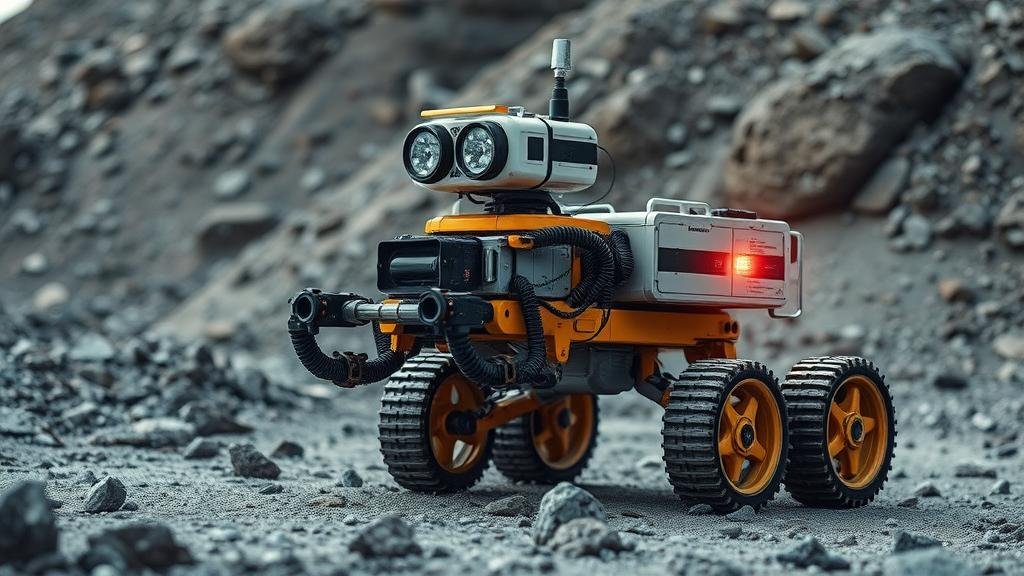The integration of robotics in hazardous exploration zones.
The Integration of Robotics in Hazardous Exploration Zones
The rise of robotics technology has revolutionized the way hazardous exploration zones are approached, significantly enhancing safety, efficiency, and data collection methods. From nuclear disaster sites to deep-sea exploration, robotics are becoming integral in minimizing human risk and optimizing operational effectiveness.
Defining Hazardous Exploration Zones
Hazardous exploration zones are areas characterized by environments that pose significant risks to human health and safety. These can include:
- Nuclear disaster sites, such as Chernobyl, Ukraine, where radioactive contamination remains hazardous.
- Volcanic regions, including Mount St. Helens in the United States, where lava and toxic gas pose threats.
- Deep-sea environments, such as the Mariana Trench, home to extreme pressure and temperature conditions.
By employing robotics in these settings, researchers and organizations can gather essential data while protecting personnel from perilous conditions.
Applications of Robotics in Hazardous Zones
Robots are deployed in various hazardous environments, presenting a myriad of applications:
- Inspection and Surveying: Drones and unmanned aerial vehicles (UAVs) are increasingly used for aerial surveys, especially in landscapes affected by disaster. For example, after the Fukushima nuclear disaster in 2011, drones were utilized to assess radiation levels and damage in areas that were unsafe for human inspectors.
- Data Collection: Ground robots, such as those used in Arctic exploration, gather data about ice thickness and temperature changes, aiding in climate change research. For example, the Polar Robotic Autonomous Boat (PRAB) is an example that provides valuable information without exposing humans to extreme cold.
- Rescue and Recovery Operations: Underwater robots (ROVs) are critical in search and recovery efforts, such as in submarine accidents. ROVs used in the recovery of the Air France Flight 447 in the South Atlantic in 2009 demonstrated how robotics could assist in the recovery of flight data recorders from depths of 13,000 feet.
Benefits of Integrating Robotics
The integration of robotics into hazardous exploration offers numerous benefits:
- Enhanced Safety: By removing humans from immediate danger, robotics dramatically reduce the risk of injury or fatality. For example, robots deployed in Chernobyls exclusion zone continue to monitor radiation levels and perform maintenance tasks.
- Increased Efficiency: Robots can operate continuously and perform tasks quicker than human workers. This capability is vital in emergencies where time is critical.
- Data Accuracy: Robotics can collect high-fidelity data over time, leading to more accurate assessments of conditions in hazardous environments. For example, the Mars rovers have provided detailed geological and atmospheric data that has enhanced our understanding of the planet.
Challenges and Limitations
While the advantages of robotics in hazardous exploration are clear, challenges remain:
- Technological Limitations: Robotics are limited by their design, often facing challenges in navigating complex or unpredictable environments.
- Cost: The initial investment in advanced robotics can be significant, potentially limiting their adoption in some organizations.
- Human Oversight: Although robotics can operate autonomously, human supervision is often necessary, which can introduce delays in operations.
The Future of Robotics in Hazardous Exploration
The future of robotics in hazardous exploration appears promising. Ongoing developments in artificial intelligence (AI) and machine learning are leading to smarter, more autonomous systems capable of adapting to unexpected challenges. For example, Boston Dynamics Spot robot trialed for inspections in hazardous industrial environments, showcasing robotics evolution toward enhanced agility and decision-making capabilities.
Actionable Takeaways
As organizations look to integrate robotics into their operations in hazardous exploration zones, consider the following:
- Conduct an assessment of specific hazards and the potential robotic solutions that can mitigate risk.
- Invest in training for personnel on how to operate and interpret robotic data.
- Focus on developing partnerships with technology providers specializing in robotics for tailored solutions.
To wrap up, the integration of robotics in hazardous exploration zones not only enhances safety but also improves efficiency and data accuracy. As technology continues to advance, the role of robotics will likely expand, paving the way for a future where humans are better protected while still reaping the benefits of exploration.



